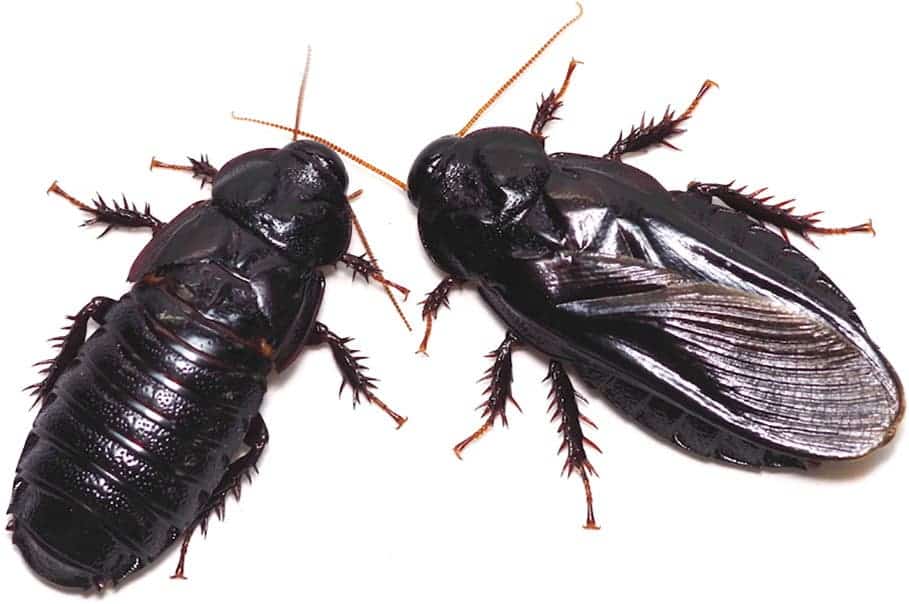
The Taiwanese giant wood roach (Salganea taiwanensis) mates for life, spending the rest of its life inside rotten logs across Asia feeding and raising its young. A new study shows that this rare monogamous union is strengthened by minor acts of cannibalism, with the newlyweds taking turns munching each other’s wings down to stubs once they move into their new log together. According to researchers this consensual cannibalism has been facilitated and may have evolved thanks to the roaches’ monogamous bond.
This striking behavior has been identified for the first time in a new study published by Haruka Osaki from Kyushu University. The Japanese biologist first encountered wingless roaches six years ago while she was still a student. She noticed that their wings were chewed by something. Even then, she knew that it was highly unlikely that these marks were left by some predators, and rather were the result of the cockroaches eating each other’s wings. But why?
Years later, Osaki finally unraveled the mystery once she completed fieldwork for her Ph.D. She collected wild cockroaches from the forest and brought them to the lab, where she formed 24 couples. For three days, every move the roaches made was recorded by video cameras, including the moments when the insects started eating each other’s wings.
First, one of the bugs climbs on the other’s back and starts munching on the wings. When they’re ready to take a break, the bugs will swap positions before resuming. Sometimes, the roach having its wings eaten gives a violent shudder, which immediately causes the other to disengage and take a forced break before they’re ready to start again. Other than these rare moments, it didn’t seem like the roaches were in pain while they had their appendages eaten. Twelve of the couples partially ate each other’s wings, while the other twelve consumed the wings completely.
Cannibalism is rather frequent among insects and some spiders. Cannibals can benefit from a larger food supply following the elimination of competition, but also from the higher nutritional quality of feeding on arthropod body tissues rather than plant tissues. Some even cannibalize their mates, with the most notable example being praying mantises.
The Taiwanese roaches are radically different though. For them, cannibalism is a mutual thing, rather than only one mate being fed. Also, they don’t eat each others’ wings for nutritional value since there’s hardly any nutrients there.
The benefit lies in living more comfortably in tight quarters without having to deal with cumbersome wings. Since wings can also collect mold or mites, this minor cannibalism may also provide protection against diseases.
As for downsides, there don’t seem to be any since the roaches make a decision to mate for life, never again leaving their nest or seeking out other mates. You don’t need wings anymore if you don’t plan on flying again. Speaking to the New York Times, Osaki adds that in a natural world where the sexes typically have competing interests, the roaches are a rare example of mates that want the same thing.
The findings appeared in the journal Behavioural Notes.






